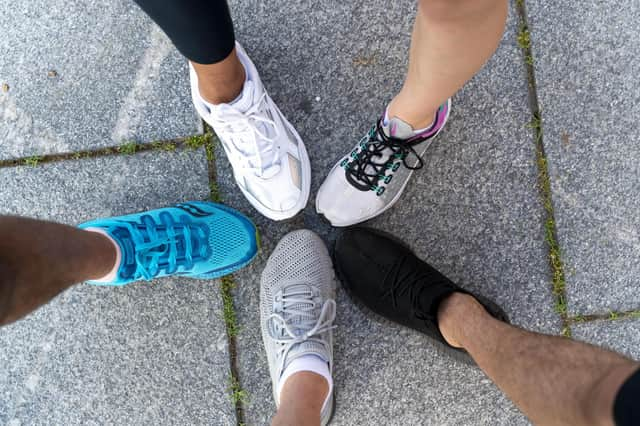FEELING GREAT: It’s vital you choose the right footwear when you exercise


The next step is to imagine you’re thinking about increasing your amount of exercise or activity, but you’re going to play it safe with a few very gentle walks, or maybe even a jog.
Here are a few things you should consider and ideas we regularly pass onto clients at the Paul Gough Physio Rooms.
Advertisement
Hide AdAdvertisement
Hide AdThe most important thing when doing any exercise is choice of footwear. Trainers don’t need to be expensive, but don’t underestimate the importance of a decent pair of running or walking shoes. Tennis shoes won’t do, white plimsolls are out and don't choose those old running shoes that are stuffed away in the cupboard.
To reduce the risk of aches and pains in muscles and damage to your joints, you’ll be better off in fresh, well-cushioned running or walking shoes.
Don’t go for the obvious big name brands either - they might look great, but they are not always what YOU need.
Each brand of trainer will have its own instep shape for your foot - and they can’t all be right for yours. Once you’ve found the brand or style that works best for you, the one that feels comfortable and lets you walk or run without any issues, stick with it! I’ve seen injuries like shin splints and Achilles tendon problems happen because a client has swapped the make or manufacturer of the trainers they wear.
Advertisement
Hide AdAdvertisement
Hide AdHere’s another tip: Wear something comfortable. Most new (and naive) runners will overdress at the beginning, forgetting how hot they will quickly become. It takes just 6-7 minutes to get your body warm. If the temperature is +12 Celsius, shorts and a T-shirt or vest will do. If the temperature drops below 8 Celsius or you’re a very early morning runner, step up to leggings and a long sleeve T-shirt.
If the temperature drops below that, I run wearing my hat and gloves because hands take the longest to warm up and heat is lost through your head. So, it’s better to have the warm blood supply hitting the important muscles you’re going to be using, such as in your legs, than it being directed to your hands.
For more tips and advice, please get in touch for a FREE copy of my book The Healthy Habit. I have 3 available to the first readers to get in touch. It is essential reading for people aged 50+ in the North-East, and for anyone that would like to improve their own healthy habits. Please call 01429 866771 or visit paulgoughphysio.com.